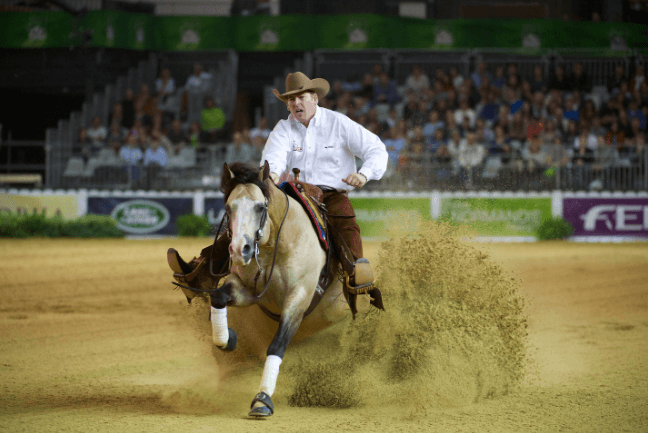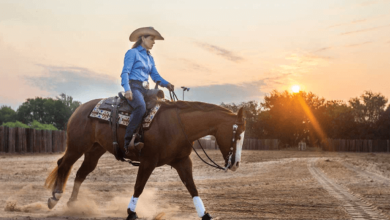What Are the Compulsory Movements in Reining Patterns?

Reining, a discipline rooted in the traditions of working cow horses, is an art form that demands precision, control, and finesse. Within the intricate patterns that define the sport, there are a set of compulsory movements that showcase the horse’s athleticism and the rider’s expertise.
These movements, carefully executed with seamless transitions and flawless timing, captivate audiences and judges alike. From spins and circles that test the horse’s agility to stops and sliding stops that demonstrate their power and control, each movement is a testament to the harmonious partnership between horse and rider.
But there’s more to this captivating world of reining patterns; there are lead changes and rollbacks, intricate maneuvers that leave spectators in awe. So, let’s explore What Are the Compulsory Movements in Reining Patterns? unraveling the secrets behind these mesmerizing displays of equine athleticism and horsemanship.
Spins and Circles
Spins and circles are fundamental movements in reining patterns, showcasing the precision and control of the horse and rider. Correct body positioning, timing, and cues are essential for executing these maneuvers with finesse.
In spins, the horse pivots around its hindquarters, while maintaining a balanced frame and rhythm.
Circles require the horse to maintain a consistent bend and speed, while the rider uses subtle aids to guide and shape the movement.
Mastering these elements is crucial for success in reining patterns.
Read Also How Can I Prevent Workout Injuries?
Stops and Sliding Stops
Stops and sliding stops are integral components of reining patterns, demonstrating the horse’s ability to come to a controlled and powerful halt while maintaining balance and poise.
Proper footwork is crucial in executing a smooth sliding stop, as it allows the horse to engage its hindquarters and maintain balance throughout the maneuver.
Training exercises such as rollbacks and backing drills can help improve the speed and precision of stops, ensuring a seamless performance.
Lead Changes and Rollbacks
Lead changes and rollbacks are advanced maneuvers that showcase the horse’s agility, responsiveness, and ability to transition smoothly between gaits and directions.
Proper body positioning during lead changes is crucial, with the horse shifting its weight onto the new leading leg while maintaining impulsion.
For rollbacks, the horse must engage its hindquarters and pivot around its inside hind leg.
Common mistakes to avoid include incorrect timing, lack of collection, and improper positioning, which can result in loss of balance and precision.
Read Also What Are The Rules Of Polocrosse?
Conclusion
In conclusion, reining patterns require a set of compulsory movements that showcase the horse’s agility, responsiveness, and precision. These movements include spins, circles, stops, sliding stops, lead changes, and rollbacks.
Each movement requires the horse and rider to work together in perfect harmony to execute them flawlessly. Interestingly, statistics show that the average reining pattern consists of approximately 20 movements, highlighting the complexity and skill required in this equestrian discipline.

